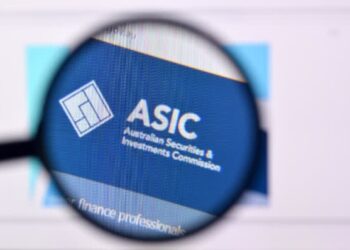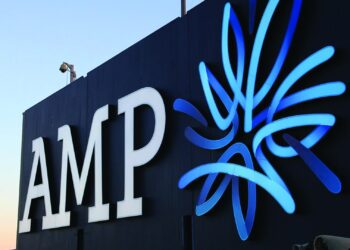The scheme, first proposed by the 2017 Ramsay review and backed by the royal commission, is expected to encourage industry to support strong standards, enhancing trust and confidence in the financial services sector. But for financial advisers, who are being asked to fund $18.5 million for the first full year period, it’s a burden deemed unjust.
Speaking to media ahead of the scheme’s launch, David Berry, the inaugural chief executive officer of the Compensation Scheme of Last Resort (CSLR), told ifa that he appreciates that any additional cost to small businesses is not something “people would welcome”.
He pointed out that the CSLR is an industry-funded scheme governed by legislation which ensures that those firms subject to the CSLR levy pay in proportion to their size, relative to the sub-sector in which they operate.
“I appreciate their position [that of advisers], we’re acting in accordance with legislation. We have worked through what we see as the likely claims, which we’ll need to pay and as such that’s the number. We can’t really refute that number at the moment, it’s just more the work that’s gone into determining that’s how much we expect to pay in the first and second levy period,” said Berry.
Last month, the CSLR revealed that the cost of the first levy period, which will be funded by the government, is $4.8 million, while the second levy is estimated at $24.1 million with much of the cost charged to advisers.
Commenting on the hefty slice charged to advisers, Berry said: “I would highlight though that the majority of the Dixon cost is being borne by the 10 largest lenders and general insurers. They’re fronting up $241 million to support the compensation.”
The Financial Advice Association Australia (FAAA) is asking for urgent government intervention on the CSLR, citing the unexpected scale of the levy and its focus on addressing legacy issues.
Joining the ifa Show podcast recently, the FAAA’s general manager of policy advocacy and standards, Phil Anderson, said the FAAA wants to see the government pick up the entirety of the legacy Dixon Advisory matters.
“The business went into administration in January of 2022. The legislation for the CSLR was not passed until June of 2023, so nearly a year and a half later. It received royal assent in early July of 2023. We do not believe that this legislation should be applied retrospectively, and if we are required to pay for complaints that were submitted after the 7 September 2022, but before the legislation was passed, we think that’s wrong,” Anderson said.
“We think that there should not be a retrospective application of the law here. The vast bulk of those post-7 September 2022 Dixon complaints were received in September and into October of 2022. If you take out all of the Dixon Advisory matters, that would be a good outcome. That would significantly reduce the cost. But we would certainly argue that we should not be paying for Dixon Advisory matters that were received prior to royal assent in July of 2023.”
Moreover, Anderson pointed out the levy will only get higher in financial year 2025–26. Namely, according to estimates drawn up by the Actuaries Institute, the Australian Financial Complaints Authority (AFCA) will need until the March quarter of 2026 to complete the processing of legacy Dixon Advisory matters.
“We are talking about the prospect of an even larger number in the financial year 2026,” Anderson said.
“So, this is an issue that we need to argue strongly for, not only this year or the year that’s coming up, but the following year. So, it’s not just about $1,200. It’s probably significantly more in the 2026 year that we certainly want to see the government come to the party on.”
To hear more from Phil Anderson, click here.




I think it is time we hold the government responsible and take them to court, as they are behaving illegally by applying a law that was not law at the time the Dixon debacle happened. So FAAA and other Financial adviser reps, do something for us and get the lawyers involved. I am sure we would win this case easily.
Yes lets have all road uses paying my speeding fines too. What a stupid statement.
This stupidity is going to far every innocent adviser pays for Dixon is appropriate….
David Berry is wrong. This type of proposal was first proposed by the Wallis Inquiry in the 1990s. But it was rejected by Treasury and The Insurance and Superannuation Commission because it made good operators in the industry pay for bad operators. They said it would just encourage bad operators and bad practises.
So here we are again a bureaucracy being set up to foster bad practise. Just the same as FASEA.
All because ASIC is again incompetent.
Was it NOT compulsory for Dixons to have PI Insurance as a condition of its AFSL.
Whatever happened to their PI cover, how did ASIC allow Dixon’s to avoid this liability in the first place?
This is a government stuff up and they want us to pay for it.
The first line of protection for consumers is the firms PI Insurance and only after that has been exhausted, then CSLR will come in to meet the residual.
Now how do we fix this?
I strongly recommend that every adviser must join the AIOFP and send a message to Canberra that we will no longer tolerate incompetent behavior.
William Mills
Price Financial Intelligence
Isn’t it a Product Failure?
totally agree,
I am joining the AOIFP. I will keep my FAAA membership now only to advocate for them to support the only association with the “BALLS” to challenge this discrimination of advisers via regulation.
Backwards greedy stupid government taxing and already strained and over regulated subsectir which is bleeding practitioners l. Why be an adviser? Brokers wholesale accountants lawyers even medical practitioners pay NOTHING in the range if advisers and out PI is HIGHER. What’s the point of pi if we have to pay for past advisers mistakes too. Disgusting Narromine minded short sighted specious rot
Sure David, the number cannot be refuted, the actual mechanism put in place by Government however, stinks to the highest order.
All I’m getting from this is another levy to pay, thus increasing the cost to serve and the continuation of the Hotmess.
The new lesson for greedy exec’s however is that they can get away with highway robbery and the rest of the advice businesses continue to deal with the mess once they drive away in the exotic cars – provided you have the right legal structures snd entities in place. (See the E&P Annual report page 50-52 for excellent examples of Rem).
The lesson for ASIC is that it can continue to be an inept (at best) regulator and will get more money to run its own fiefdom without even the slightest need to acknowledge that it got it BADLY wrong with Dixon’s.
Additionally the thing that really irks me is that Dixon Advisory, then a subsidiary of Evans Dixon which is now E&P Financial Group (ASX: EP1) on page 14 of their 2022 annual report were bragging that they got to keep the money rolling in with respect to the “Dixon Advisory client base with just over three quarters of clients choosing to remain with the business and transition to Evans & Partners with their adviser”.
https://www.annualreports.com/Company/ep-financial-group-limited
Its so damn hard not to be cynical and saddened by the state of this industry.